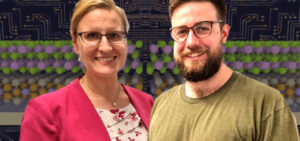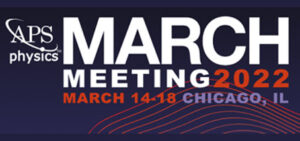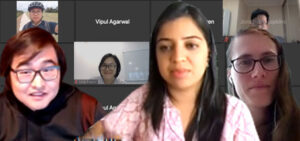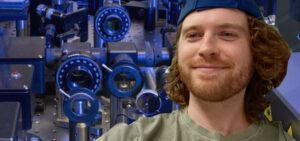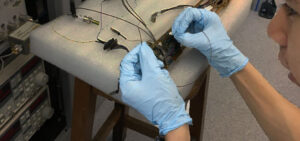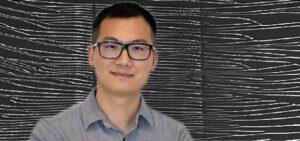Collaborate
Subscription confirmed
 WELCOME TO FLEET NEWS with regular updates from the Australian Research Council Centre of Excellence in Future Low-Energy Electronics Technologies.
WELCOME TO FLEET NEWS with regular updates from the Australian Research Council Centre of Excellence in Future Low-Energy Electronics Technologies.
Each edition of FLEET News brings a selection of research news from around the Centre, a wrap-up of FLEET stories in the media, outreach, and other news regarding FLEET researchers and research.
Catch up on past issues of FLEET News.
Michael Fuhrer
Director, FLEET
ARC Centre of Excellence in Future Low-Energy Electronics Technologies
Following the news
 If you’re on Facebook, Twitter or Linkedin, you can follow our accounts to stay up to date with FLEET news and events. You can also follow news and events at FLEET.org.au.
If you’re on Facebook, Twitter or Linkedin, you can follow our accounts to stay up to date with FLEET news and events. You can also follow news and events at FLEET.org.au.
If a friend or colleague might be interested in our news, send them this link. Or let us know and we’ll invite them.
The challenge
 The big challenge that FLEET is addressing is the increasing energy load of computation, which is currently at least 5% of world electricity use, and doubling each decade.
The big challenge that FLEET is addressing is the increasing energy load of computation, which is currently at least 5% of world electricity use, and doubling each decade.
To date, the amount of energy being burned by computing has been kept in check by a phenomenon known as Moore’s Law, whereby the number of chips in a given area doubles every two years. But we are fast approaching a limit for Moore’s Law.
Current computing is based on semiconductor chips that each burn a tiny, tiny amount of power as they ‘switch’. FLEET will develop switches that will burn almost zero energy, operating at room temperature.
Our research
FLEET will use new concepts for electronic conduction without resistance to create a new generation of ultra-low energy electronics.
We will develop materials in which electricity can flow with minimal resistance and dissipation of heat, and devices in which that electric current can be switched on and off.
FLEET’s three Research Themes are:
- Topological materials (led by Alex Hamilton, UNSW)
- Exciton superfluids (Elena Ostrovskaya, ANU)
- Light-transformed materials (Kris Helmerson, Monash)
And this research is underpinned by two Technology themes:
- Fabrication of atomically thin materials (Xiaolin Wang, University of Wollongong)
- Nanodevice fabrication (Lan Wang, RMIT)
About FLEET

With over $40M investment from the ARC (Australian Research Council) and contributing organisations, FLEET will make a significant global impact in the electronics and energy sectors.
Headquartered at Monash University, and an ARC Centre of Excellence, FLEET has 19 chief investigators at seven Australian institutions, 17 partner investigators at 13 institutions worldwide, and will have over 100 higher-degree research students and postdoctoral fellows.
The highly interdisciplinary team includes some of Australia’s best researchers in atomic physics, condensed matter physics, materials science, electronics, nanofabrication and atomically thin materials.
By building strategic and strong partnerships with Australian and international industry, research institutions and government, FLEET will build capacity for advanced electronics research in Australia and train the workforce for the next generation of electronic materials researchers and future semiconductor industry.
Recent news
A new RMIT-led study stacks two different types of 2D materials together to create a hybrid material providing enhanced properties. This hybrid material possesses valuable properties towards use in future memory and electronic devices such as TVs, computers and phones. Most significantly, the electronic properties of the new stacked structure can be controlled without the need for external strain, opening …
Ex FLEET/Swinburne PhD student Now senior postdoctoral scientist at Heidelberg University (Germany) Hello FLEETers! I am Pavel. I completed my Ph.D. at FLEET, working with Prof. Jeffrey Davis at Swinburne University of Technology (Centre for Quantum and Optical Science). Actually, if your own work at FLEET includes optical characterisation of 2D semiconductors, you might even be using something I built! …
A number of FLEET members and affiliates are attending APS March Meeting this week, online or in person. Here’s a list of talks to check out (if you have registered for the conference, catch-up links are provided on each page). Monday 14/3 Yonatan Ashlea AlavaIn situ epitaxial aluminium gates in ultra-shallow GaAs/AlxGa1-xAs heterostructures for low noise quantum point contacts Feixiang …
Post-grad job hunting, perfecting the resume, and how to handle pre-interview nerves An expert panel ran through issues of importance to PhD and Masters graduates at UNSW this month, answering the questions at top of mind for ECRs towards the end of study, as they prepare to start looking for graduate positions for the first time. The event was organised …
A collaborative study led by the University of Wollongong confirms switching mechanism for a new, proposed generation of ultra-low energy ‘topological electronics’. Based on novel quantum topological materials, such devices would ‘switch’ a topological insulator from non-conducting (conventional electrical insulator) to a conducting (topological insulator) state, whereby electrical current could flow along its edge states without wasted dissipation of energy. …
Congratulations to FLEET’s Jesper Levinsen, whose exceptional work as referee of peer-reviewed papers has been recognised by the Outstanding Referee Awards, one of only three in Australia in 2022, by the American Physical Society (APS). The APS recognises around 150 outstanding referees each year who have demonstrated exceptional work in the assessment of manuscripts submitted to the Physical Review journals. …
Ex FLEET/Swinburne Research Fellow, now financial crime management at ANZ Bank Applying skills learned in physics to combatting financial crime Hi FLEET, I’m Shilpa Sanwlani. At FLEET, I was Research Fellow with Prof. Jeff Davis in Swinburne University of Technology for 1.5 years (2017-2018), using coherent multi-dimensional spectroscopy (CMDS) to investigate novel Floquet states of 2D electron gas systems and …
Two-quantum multidimensional coherent spectroscopy (2Q-MDCS) quantifies precise biexciton binding energy Applications in future devices based on biexcitons in TMDCs A rare spectroscopy technique performed at Swinburne University of Technology directly quantifies the energy required to bind two excitons together, providing for the first time a direct measurement of the biexciton binding energy in WS2. As well as improving our fundamental …
A group of Sydney Quantum undergraduates have recently finished a summer term with Alex Hamilton’s QED group at UNSW, gaining practical experience with quantum devices as they worked alongside FLEET and QED researchers. Over the course of their six-week placement, students pursued individual projects, developing skills in device fabrication and experimental process. The UNSW Physics Quantum Electronic Devices group investigates …
First published at EQUS: the ARC Centre of Excellence for Engineered Quantum Systems Eddies in an exotic liquid known as a superfluid merge to form large vortices, analogous to how cyclones form in the turbulent atmosphere. The new research, by a team from The University of Queensland, EQUS and FLEET will be important for emerging technological applications of superfluidity, such …
“The long divided, must unite; long united, must divide. Thus it has ever been.” The opening lines of the great Chinese historical novel Romance of the Three Kingdoms condense its complex and spectacular stories into a coherent pattern, that is, power blocs divide and unite cyclically in turbulent battle years. A good philosophy or theorem has general implications. Now, published …

